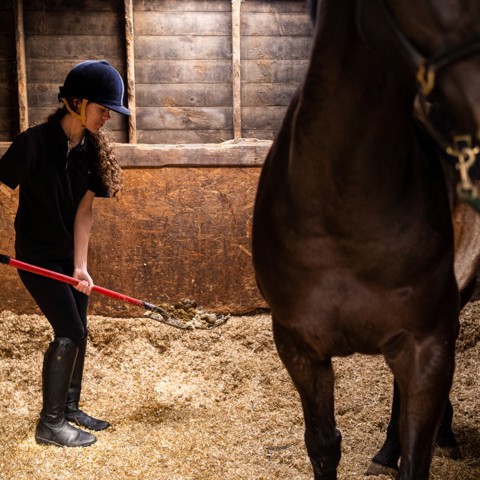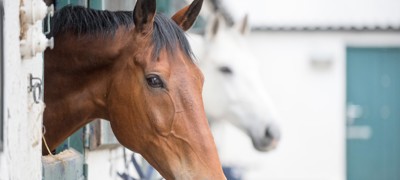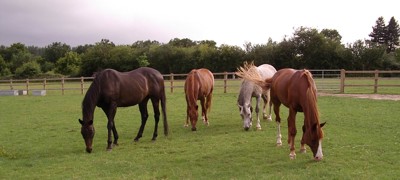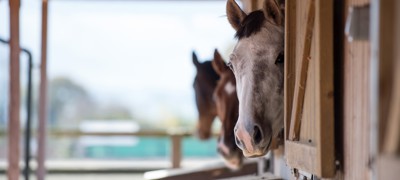Your horse’s comfort and welfare are, of course, paramount and we have a useful set of guidelines for owners which will help you make the right decisions around stable safety.
Here we look at:
- Factors to consider when choosing bedding
- Mucking out options
Factors to consider when choosing bedding
Regardless of the type of bedding chosen, it is essential that the material is of a good quality, is not toxic if eaten, and is not an irritant to the skin. There are many different bedding materials available and when choosing the right option for your horse, it is important to assess each material and consider which bedding will best meet their individual requirements.
Quality
chevron-down
chevron-up
Dust levels should be kept to a minimum. If your horse (or you) suffers with respiratory issues, low dust bedding will be the ideal choice. Using a high-quality bedding with no mould spores and low dust levels helps prevent respiratory problems arising.
Efficiency
chevron-down
chevron-up
Your bedding choice should allow for easy, efficient removal of droppings and good urine absorption. Stable design is also important and will determine how efficient a bedding material is in terms of drainage and absorption. A bedding material with poor urine absorption can increase the levels of ammonia in the stable which can negatively affect your horse’s respiratory health1.
Support
chevron-down
chevron-up
Your bedding choice must provide support for your horse’s hooves while standing and for the whole body when lying down. This helps prevent stable injuries and allows the horse to lie down and get up safely without slipping. Good, high banks and thick bedding will also help to alleviate injury if a horse becomes cast (when the horse has laid down or rolled and positioned themself with their legs so close to the wall that they can neither get up nor reposition themselves to roll the other way).
Behaviour
chevron-down
chevron-up
The bedding material you choose can influence your horse’s behaviour. Straw bedding, for example, has been found to increase the duration of time a horse lies down in their stable and provides greater opportunity for your horse to occupy themselves through foraging2. However, care should be taken for those horses on a controlled diet for weight loss in case they eat too much straw, adding additional calories.
Storage
chevron-down
chevron-up
Products with a robust, waterproof packaging can often be stored outside, or in a sheltered area. Unpackaged bedding, such as straw, needs to be stored in a cool, dry place such as a weatherproof barn, to prevent it from becoming mouldy, dusty and unusable. Consideration should also be given to storage security to help prevent the theft of bedding materials.
Availability
chevron-down
chevron-up
The availability of certain types of bedding materials may be affected by the time of the year, the success of a harvest or the presence of suppliers in your area as costs can increase when supplies are limited.
Waste removal
chevron-down
chevron-up
The majority of bedding materials are biodegradable; the only difference being the timescale in which each rots down. The method of waste removal may influence the choice of bedding material and therefore livery yards may stipulate what type of bedding must be used. For example, an increasing number of yards have to pay for the removal of muck heaps, which makes the amount of waste important. There can be significant differences in the amount of waste produced from each product when mucking out. Further information on the storage and disposal of muckheaps is available from the Environment Agency, Defra and the Scottish Environmental Protection Agency.
Mucking out
Regular mucking out and cleaning of the whole stable environment is fundamental to the ongoing good health and welfare of the horse.
There are a variety of mucking out systems available to choose from, each with their own advantages and disadvantages:
Full muck-out
chevron-down
chevron-up
We strongly recommend that the stable is fully mucked out on a daily basis. This ensures that all fresh droppings and urine are removed from the stable. A full muck-out may take longer to complete but will provide the best environment for the horse’s health. It is important to remember to rotate banks to prevent them becoming mouldy and gathering dust.
Part muck-out
chevron-down
chevron-up
This system is usually adopted when time is limited. For example, the droppings are removed daily during the week and then the stable is fully mucked out at weekends. It is important to add extra bedding as required throughout the week.
Deep litter
chevron-down
chevron-up
The deep litter option is often used on yards with a large number of horses. Droppings are removed from the stable and fresh bedding added on top. It is important that beds do not become too deep and the stable should periodically be completely emptied and thoroughly cleaned. Although this system is the most economical time and cost wise, it is the least suitable for the horse’s respiratory health and can cause other health problems too.
Decomposing urine and faeces can cause a build-up of ammonia in the stable, which can create respiratory health problems for your horse, highlighting the importance of good stable management. Horses kept on deep litter systems will be exposed to higher levels of ammonia compared with a horse that is fully mucked out daily.
The stabled horse’s hooves should be picked out every day, but ideally twice a day as a matter of good practice. Dry, clean bedding also helps to eliminate the risk of thrush in the hoof.
References
chevron-down
chevron-up
- Fleming, K. et al. (2008). Evaluation of Factors Influencing the Generation of Ammonia in Different Bedding Materials Used for Horse Keeping. Journal of Equine Veterinary Science. 28(4). P 223-231.
- Werhahn, H. et al. (2010). Effects of Different Bedding Materials on the Behavior of Horses Housed in Single Stalls. Journal of Equine Veterinary Science. 30(8). P 425-431.





